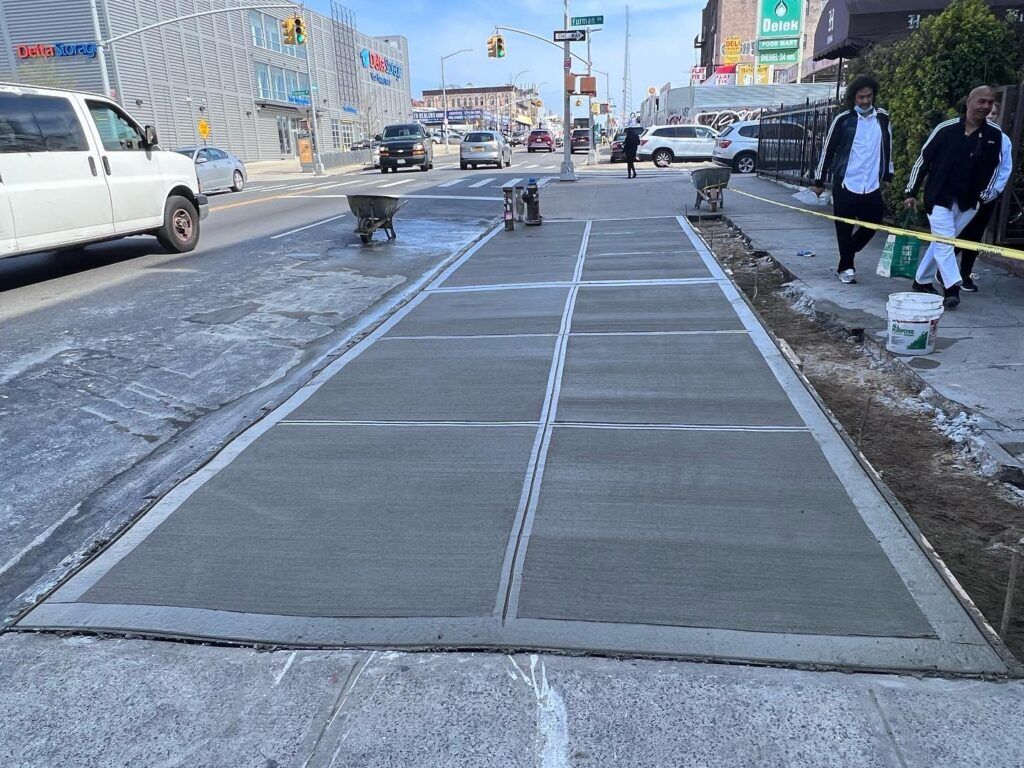A cracked sidewalk doesn’t just look bad – it can turn into a trip hazard and a lawsuit waiting to happen. Whether you are a property owner dealing with a citation or someone who’s taken an unexpected tumble, understanding who pays for what can save you thousands. The intersection of sidewalk repair responsibility and insurance coverage creates a maze that even seasoned property owners find confusing.
Who’s Legally Stuck with the Bill?
The sidewalk repair answer is less simple than you would hope. Most cities put the burden on property owners to maintain the sidewalk adjacent to their property, even though it’s technically public space. It’s kind of like being told you are in charge of mowing a patch of grass that isn’t yours — but that’s how the law works.
This responsibility typically includes:
- Regular inspections for cracks, holes, and uneven surfaces
- Prompt repairs when violations are issued
- Snow and ice removal during winter months
- Tree root damage mitigation
Since rules change city to city, the fine print can vary. Some places make neighbors split the repair cost with the city; others dump the whole expense on you. Before assuming anything, check your local ordinances – ignorance isn’t a valid defense when violation notices arrive.
Insurance: Your Safety Net or False Hope?
This is where it gets a little messy. Most standard homeowners insurance policies don’t cover sidewalk repairs stemming from normal wear and tear or municipal violations. Insurers see maintenance as a routine property owner responsibility, similar to lawn care or exterior painting.
Still, it’s not all bad news. Your policy might cover:
- Sudden damage from storms, fallen trees, or vehicle accidents
- Liability claims if someone gets injured on your sidewalk
- Legal defense costs for slip-and-fall lawsuits
- Emergency repairs following covered incidents
The key distinction lies between maintenance (your responsibility) and unexpected damage (potentially covered). A gradual crack from settling soil won’t qualify, but a massive tree branch crushing your walkway during a storm likely will.
When Disaster Strikes: Filing Claims
If you believe your sidewalk damage qualifies for insurance coverage, act quickly. Most policies require prompt notification of incidents, and delayed reporting can void your claim entirely. Document everything with photos, keep all repair estimates, and maintain correspondence with city officials.
Consider these factors when evaluating coverage:
- The cause of damage (sudden vs. gradual)
- Your policy’s specific exclusions and limitations
- Local laws regarding property owner liability
- Potential third-party claims from injuries
Remember, insurance adjusters are trained to minimize payouts. Having detailed documentation and understanding your policy terms puts you in a stronger negotiating position. Sometimes hiring a public adjuster makes financial sense for larger claims.
Making Smart Decisions
The smartest approach combines proactive maintenance with adequate insurance coverage. Regular sidewalk inspections cost far less than emergency repairs or lawsuit settlements. Consider umbrella liability coverage if your property sees heavy foot traffic.
Don’t wait until you’re facing a violation notice or personal injury claim to understand your options. Knowledge truly is power in the complex world of sidewalk repair responsibility.
Sidewalk Repair Responsibility: Take Action Today
Don’t let sidewalk issues become expensive headaches. Understanding your repair obligations and insurance limitations helps you make informed decisions before problems escalate. Whether you’re dealing with current violations or planning preventive maintenance, professional guidance makes all the difference.
Get the expert support you need at nycsidewalkviolations.com – because sidewalk violations don’t have to be overwhelming.

